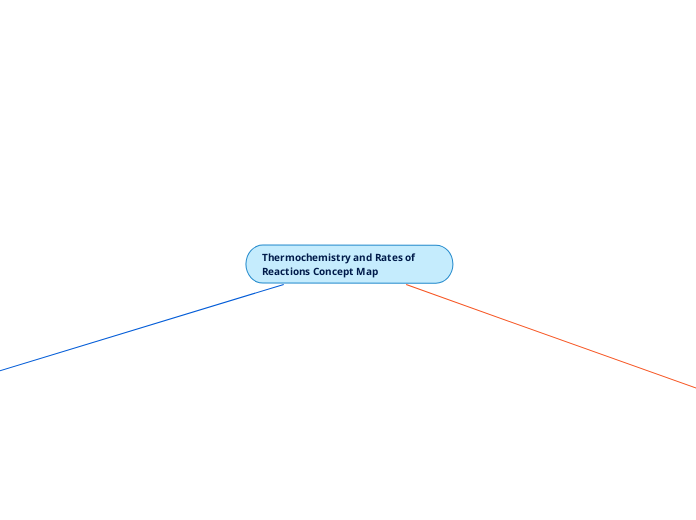realizată de Visvanathan Sanjeev 3 ani în urmă
317
Thermochemistry and Rates of reactions Concept map

realizată de Visvanathan Sanjeev 3 ani în urmă
317

Mai multe ca acesta
the concentration over time
Some take a lot longer to reach equilibrium
how serious the condition is
reaction takes longer to fight off pathogens
Some medications work close to instantaneously
used to predict dosage use
Higher dose would work faster (greater concentration)
Adults due to developed body types
Kids would take a low dose due to undeveloped systems --> rate of reaction occurs fast with low dose
Advil
Tylenol
the affect of medications on different people's bodies
the best drug for different diseases
Cooking
baking cookies
Cookies bake faster at higher temperature
Faster rate of chemical reaction
Cleaning Items
How different products have their own effect
Different products react on different surfaces and clean specific things
Counter cleaners, toilet cleaners etc.
React differently to get rid of unwanted substances as fast as possible
Unique to their own property
Affects on collision theory
Presence of catalyst
Provides alternate pathway
Larger fractions of collisions are effective
Rise in temperature
Causes particles to move and react faster according to particle theory
Chances of collisions increases
Increase in surface area
Gives more room for volume
Effective collisions
Increase in concentration
Increases rate of reaction
Higher concentration = more particles in volume which increases the likelyhood of effective collisions
Nature of chemical substances reacting
Bonds to be broken
effective collisions
Chemical nature of reactant
Maxwell Boltzmann distribution
distribution of speeds among particles at a given temperature
Represents different energies
Number of molecules with certain kinetic energy
threshold energy
the minimum kinetic energy required to convert kinetic energy to activation energy
Energy of collisions
More frequent and effective collisions
formation of the activated complex
Help determine reaction rates
reaction mechanism
elementary steps
steps in a reaction mechanism that only involves 1, 2, or 3 particles collisions
reaction intermediate
a substance that is formed during reaction and consumed when the reaction is complete
rate-determining step
slowest step in reaction mechanism
having the highest activation energy
activation energy
low activation energy
more particles with sufficient energy required to reach the transition state
high activation energy
fewer particles with sufficient energy required to reach the transition state
minimum energy required for particles to collide and rearrange in structure
the difference in energy between the reactant and the transition state
the sequence of two or more simple reactions that continue to form the overall reaction
frequency of collisions and the fraction of those collision
rate = frequency of collision x fraction of collisions that are effective
Fraction effective
Heterogenous
Reactants and Catalysts in different physical states
Homogenous
Reactants and Catalysts are in the same state
nature of reactant
Collision Frequency
concentration
surface area
particles must collide
each other or the walls of the container
ineffective Collisions
colliding particles rebound
unchanged in nature
Effective Collisions
colliding particles has sufficient energy and collide in correct orientation
break bonds and form new bonds
transition state or activated complex
Always is higher in energy than products and reactants
Particles are in constant random motion at various speeds in a chemical reaction
kinetic energy of particles
the temperature of the sample
lower the temperature, the less particles with higher kinetic energy
higher the temperature, the more particles with higher kinetic energy
Appearance of products
Disappearence of reactant
catalyst
a substance that is mostly used to speed up rate of reaction
being consumed itself
temperature
temperature decrease
temperature increase
Surface area
surface area of reactant in a hetrogeneous system is increased
Concentration of reactants
initial concentration is decrease
reaction rate decreases
initial concentration is increase
reaction rate increases
Chemical nature of reactants
similar elements (in the same group) react similar
gold and silver
react slow in air
instaneous rate of reaction
the speed of the reaction at a particular point in time
average rate of reaction
the speed of the reaction over a period of time
Change in concentration per unit time
r = Δc/Δt
mol L-1 s-1
the rate at which the reactant is consume over a time interval
the rate at which the product is formed
track individual progress and meet their optimal shape
determine efficiency of an engine
ΔHtarget = ΣΔHknown
Alter ΔH in the same way
the coefficients of a chemical equation is altered
multiplying or dividing by a constant factor
Reverse sign of ΔH
Chemical equations is reversed